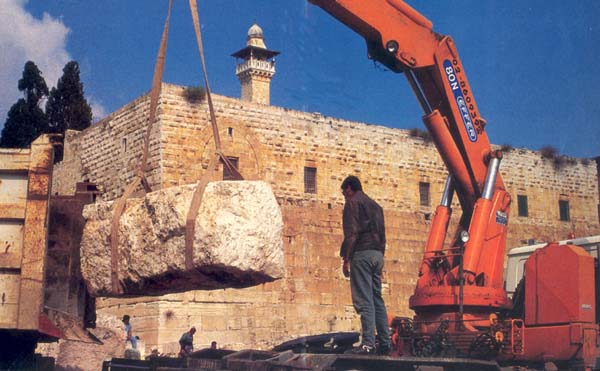Image Details

Israel Antiquities Authority
A crane removes a 10,000-pound ashlar, or hewn stone, from a street built by King Herod the Great (37–4 B.C.E.) beside the southwestern corner of the Jerusalem Temple Mount. Once part of the Temple Mount wall, the stone fell to the street when the Romans destroyed the Temple in 70 C.E. Although Jerusalem is one of the most excavated cities in the Near East, this street remained untouched until a recent dig uncovered and began to restore a 300-foot stretch. The excavation and preservation of this site, suggests Jerusalem district archaeologist Gideon Avni, represents a recent trend in the city’s archaeology: Whereas in the 1960s and 1970s, three vast excavations dominated the scene, in the past six years 120 small-scale digs have been conducted in and around the city, shedding concentrated light on long-neglected aspects of Jerusalem’s past. Sixty sites—many in disrepair since their excavation earlier this century—have been slated for preservation. This new wave of archaeology, Avni writes, allows the city to flourish while pieces of her past are maintained for the future.
